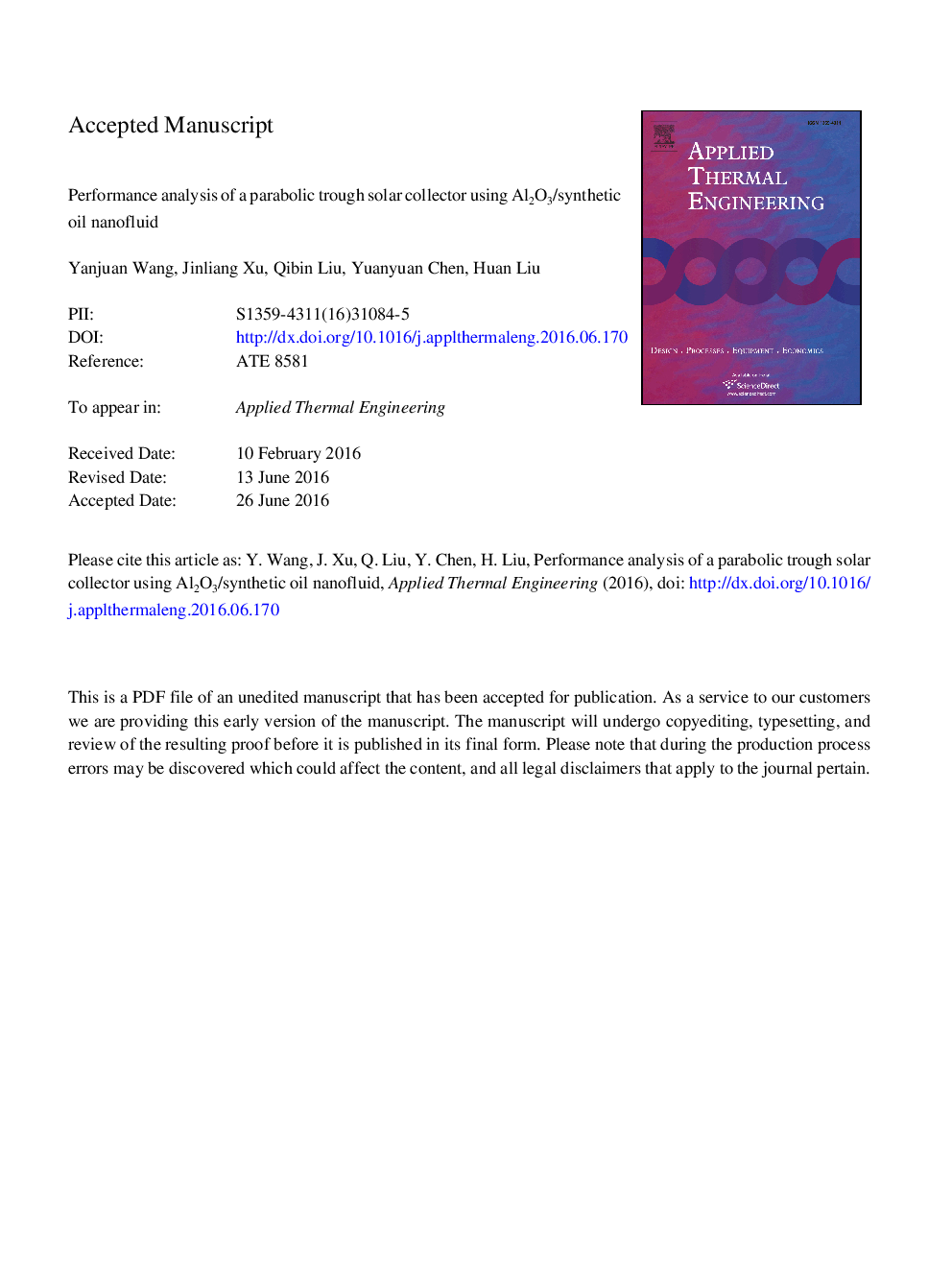| Article ID | Journal | Published Year | Pages | File Type |
|---|---|---|---|---|
| 7047170 | Applied Thermal Engineering | 2016 | 30 Pages |
Abstract
Nanofluid with unique mechanical, optical, and thermal properties, offers unique advantages over conventional fluids. In this paper, the applications of nanofluids on the parabolic trough collector (PTC) systems are investigated. A multi-field coupling simulation based on Finite Element Method (FEM) is implemented to investigate the performances of the PTC system using Al2O3/synthetic oil nanofluid as heat transfer fluid (HTF) with non-uniform heat flux distributions. The effect of Al2O3 particle concentrations and the influences of the key operating parameters on the PTC systems are also investigated. The numerical results are compared with experimental data and good agreement is obtained, proving that the proposed numerical model is feasible. It is found that the temperature gradients and the maximum temperature in the absorber are greatly reduced by using Al2O3/synthetic oil nanofluid. The temperature gradients and the deformation of the absorber decrease with the particle concentrations. The bending of the absorber decreases from 2.11Â mm to 0.54Â mm when the volume fraction increases from 0 to 0.05. Compared with the PTCs using synthetic oil, the collector efficiencies of the PTC systems using Al2O3/synthetic oil nanofluid are higher, moreover, the changes of temperature in the absorber with the direct normal irradiance (DNI), the inlet temperature, and the inlet velocity are remarkable reduced. This work provides a fundamental reference to the application of nanofluid in the PTC system.
Related Topics
Physical Sciences and Engineering
Chemical Engineering
Fluid Flow and Transfer Processes
Authors
Yanjuan Wang, Jinliang Xu, Qibin Liu, Yuanyuan Chen, Huan Liu,
